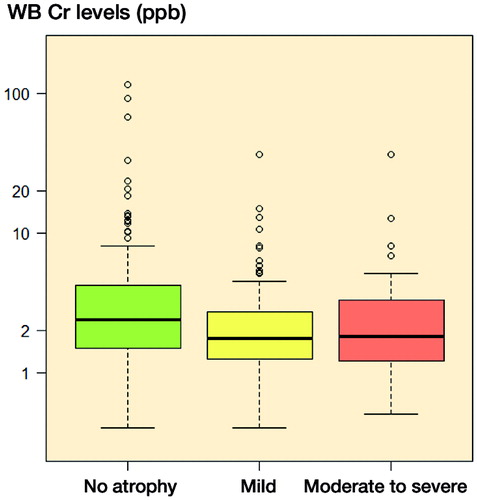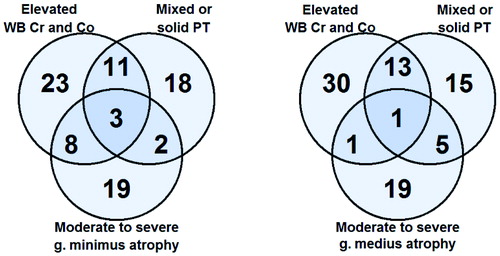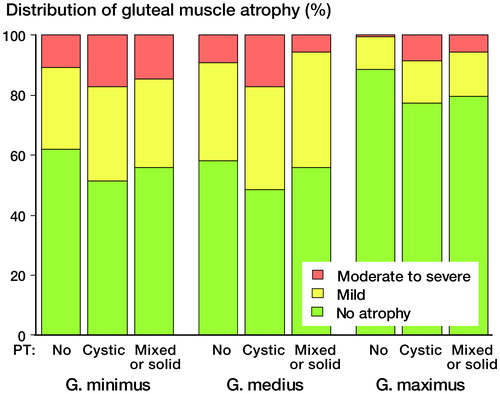Figures & data
Figure 3. Box plot showing median WB Cr levels, interquartile range (boxes), and 95% CIs (whiskers) with outliers (circles), presented according to grade of g. medius atrophy.

Table 1. Clinical and radiological details of the patients
Table 2. Prevalence (%) of fatty atrophy in each of the gluteal muscles
Figure 5. Venn diagrams showing the overlapping of findings of interest in patients with moderate-to-severe g. minimus atrophy (left panel) and with moderate-to-severe g. medius atrophy (right panel). Patients with moderate-to-severe g. maximus atrophy are not shown because of the very low prevalence.



